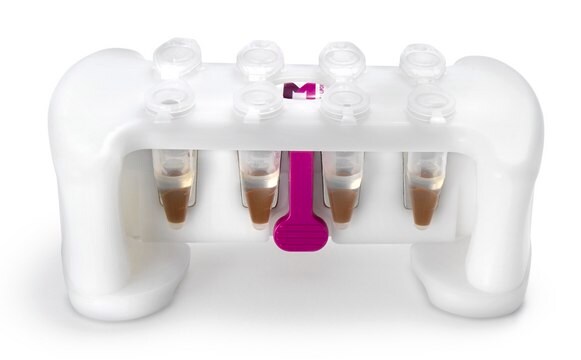ABS1513-I-AF488
Anti-phospho-Ubiquitin Antibody (Ser65), Alexa Fluor™ 488 Conjugate
from rabbit, ALEXA FLUOR™ 488
Synonim(y):
Ubiqutin, Ser65 phosphorylated, Ub, Ser65 phosphorylated
About This Item
Polecane produkty
pochodzenie biologiczne
rabbit
Poziom jakości
białko sprzężone
ALEXA FLUOR™ 488
forma przeciwciała
affinity isolated antibody
rodzaj przeciwciała
primary antibodies
klon
polyclonal
reaktywność gatunkowa
human
reaktywność gatunkowa (przewidywana na podstawie homologii)
guinea pig (based on 100% sequence homology), bovine (based on 100% sequence homology), hamster (based on 100% sequence homology), mouse (based on 100% sequence homology), sheep (based on 100% sequence homology), rat (based on 100% sequence homology), nonhuman primates (based on 100% sequence homology), horse (based on 100% sequence homology)
metody
immunocytochemistry: suitable
numer dostępu UniProt
Warunki transportu
ambient
docelowa modyfikacja potranslacyjna
phosphorylation (pSer65)
informacje o genach
human ... UBB(7314)
Opis ogólny
Specyficzność
Immunogen
Zastosowanie
Signaling
Jakość
Immunocytochemistry Analysis: A 1:100 dilution of this antibody detected CCCP treatment-induced ubiquitin Ser65 phosphorylation in PINK1-expressing HeLa cells.
Opis wartości docelowych
Postać fizyczna
Przechowywanie i stabilność
Inne uwagi
Informacje prawne
Oświadczenie o zrzeczeniu się odpowiedzialności
Nie możesz znaleźć właściwego produktu?
Wypróbuj nasz Narzędzie selektora produktów.
Kod klasy składowania
12 - Non Combustible Liquids
Klasa zagrożenia wodnego (WGK)
WGK 2
Temperatura zapłonu (°F)
Not applicable
Temperatura zapłonu (°C)
Not applicable
Certyfikaty analizy (CoA)
Poszukaj Certyfikaty analizy (CoA), wpisując numer partii/serii produktów. Numery serii i partii można znaleźć na etykiecie produktu po słowach „seria” lub „partia”.
Masz już ten produkt?
Dokumenty związane z niedawno zakupionymi produktami zostały zamieszczone w Bibliotece dokumentów.
Nasz zespół naukowców ma doświadczenie we wszystkich obszarach badań, w tym w naukach przyrodniczych, materiałoznawstwie, syntezie chemicznej, chromatografii, analityce i wielu innych dziedzinach.
Skontaktuj się z zespołem ds. pomocy technicznej






